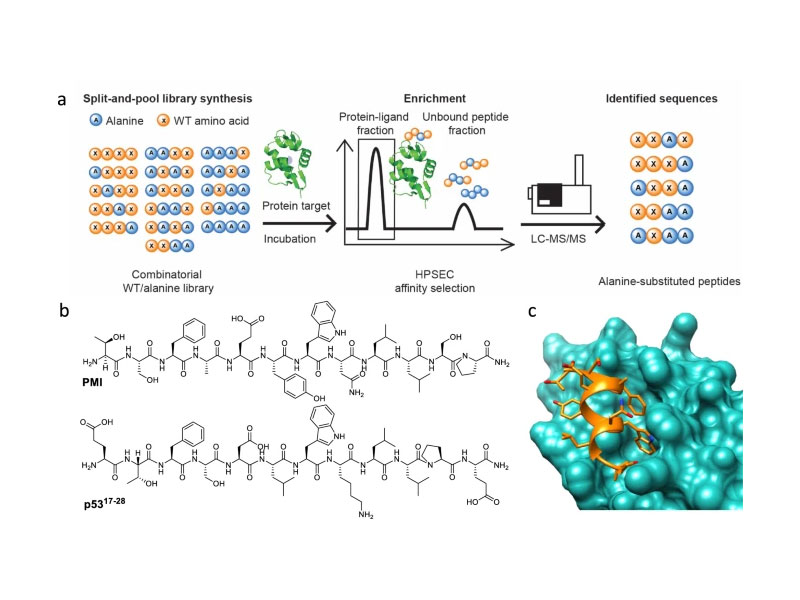
Binary combinatorial scanning reveals potent poly-alanine-substituted inhibitors of protein-protein interactions

Binary combinatorial scanning reveals potent poly-alanine-substituted inhibitors of protein-protein interactions
Communications Chemistry volume 5, Article number: 128 (2022)
Xiyun Ye, Yen-Chun Lee, Zachary P. Gates, Yingjie Ling, Jennifer C. Mortensen, Fan-Shen Yang, Yu-Shan Lin & Bradley L. Pentelute
Abstract
Establishing structure–activity relationships is crucial to understand and optimize the activity of peptide-based inhibitors of protein–protein interactions. Single alanine substitutions provide limited information on the residues that tolerate simultaneous modifications with retention of biological activity. To guide optimization of peptide binders, we use combinatorial peptide libraries of over 4,000 variants—in which each position is varied with either the wild-type residue or alanine—with a label-free affinity selection platform to study protein–ligand interactions. Applying this platform to a peptide binder to the oncogenic protein MDM2, several multi-alanine-substituted analogs with picomolar binding affinity were discovered. We reveal a non-additive substitution pattern in the selected sequences. The alanine substitution tolerances for peptide ligands of the 12ca5 antibody and 14-3-3 regulatory protein are also characterized, demonstrating the general applicability of this new platform. We envision that binary combinatorial alanine scanning will be a powerful tool for investigating structure–activity relationships.



